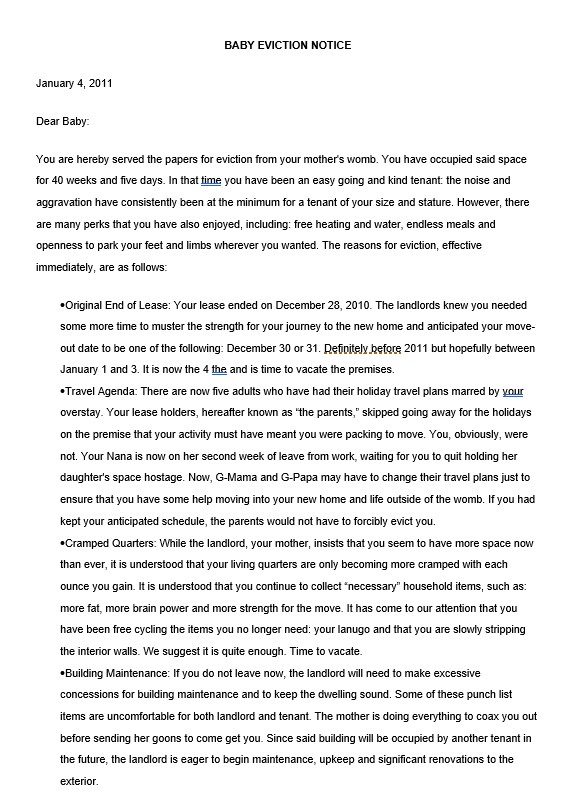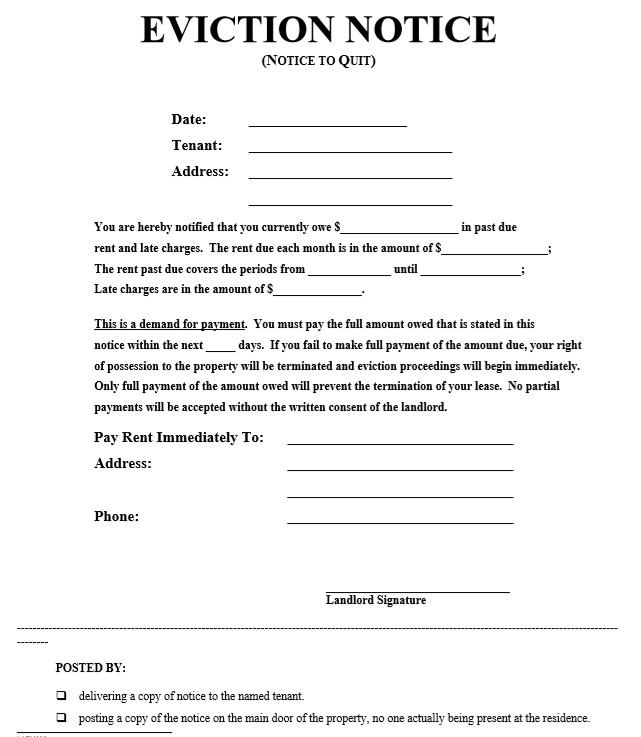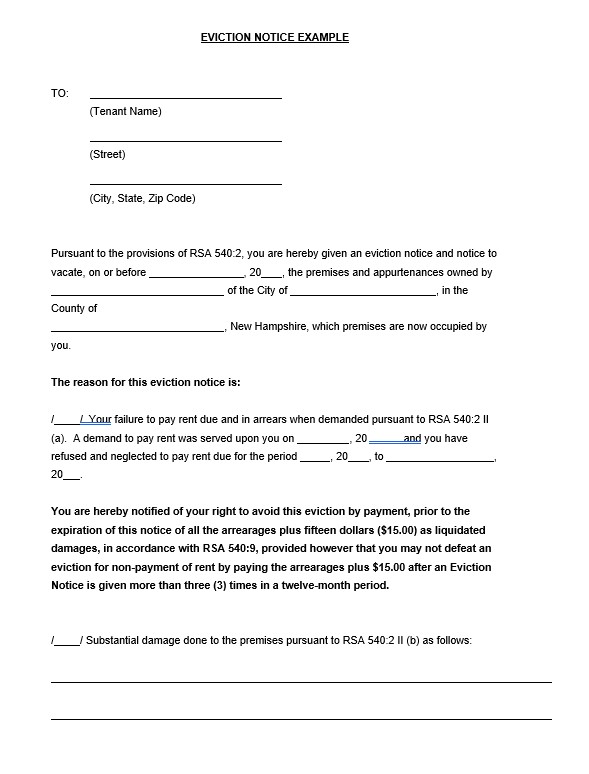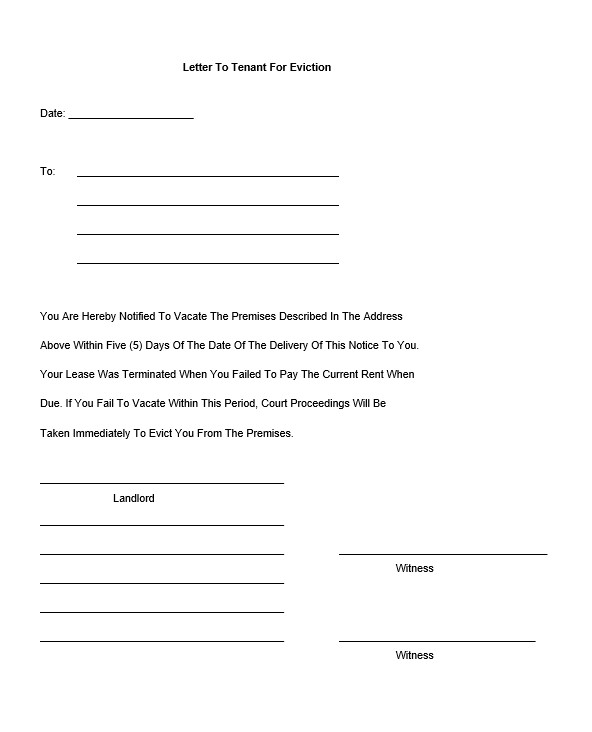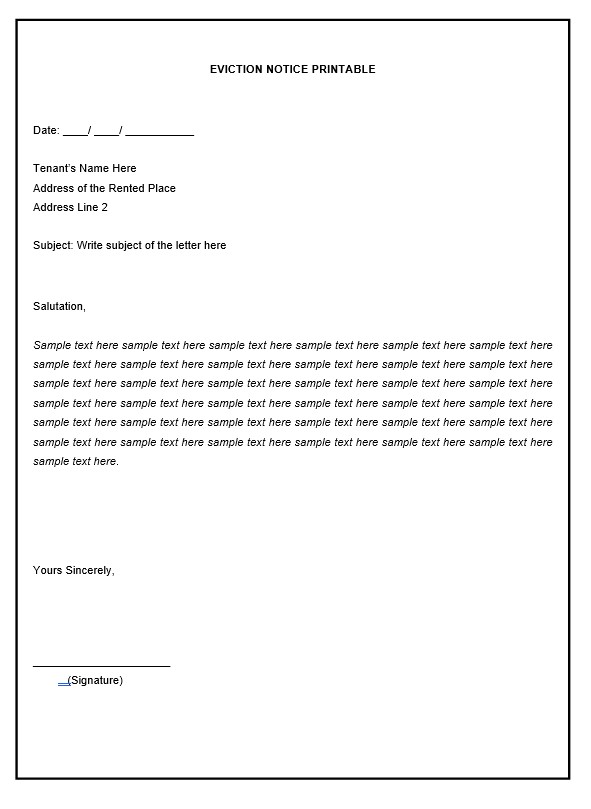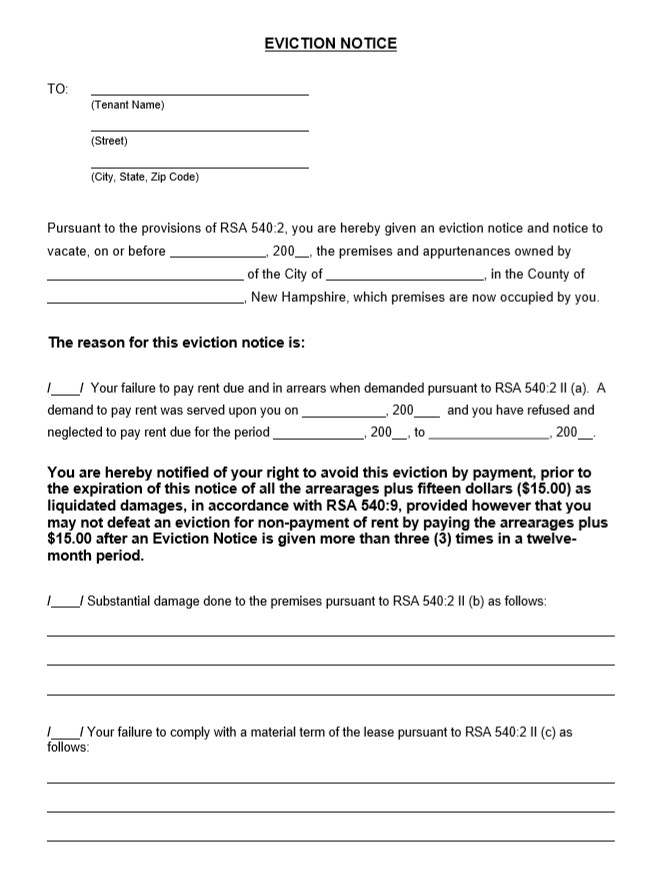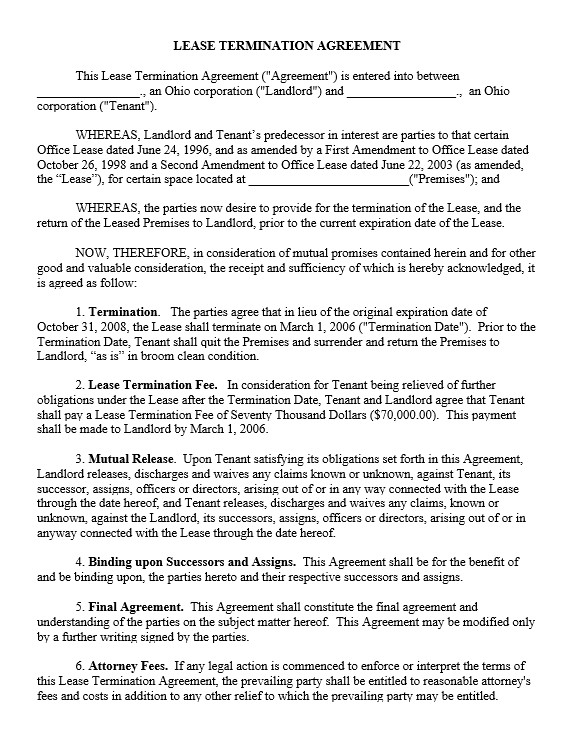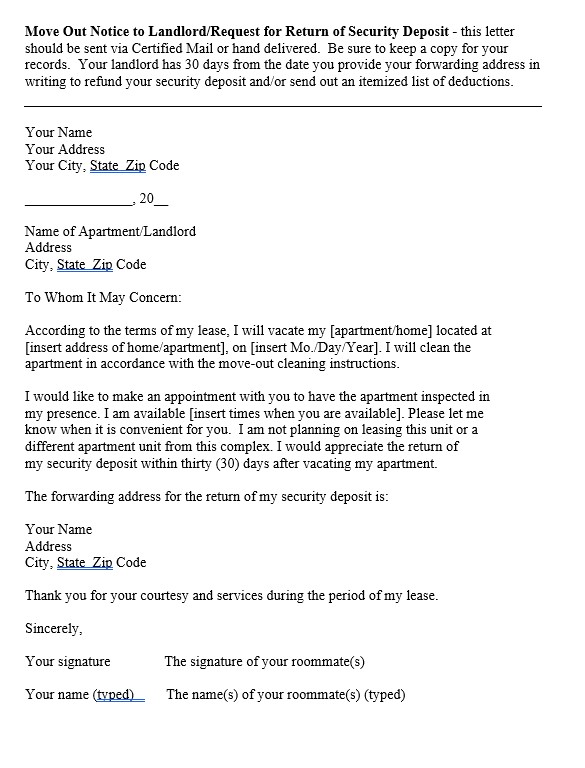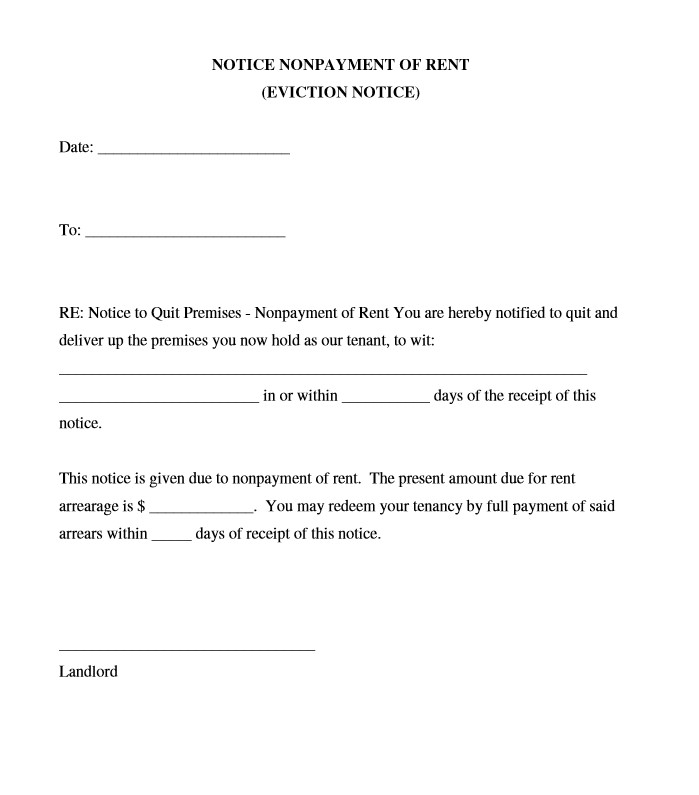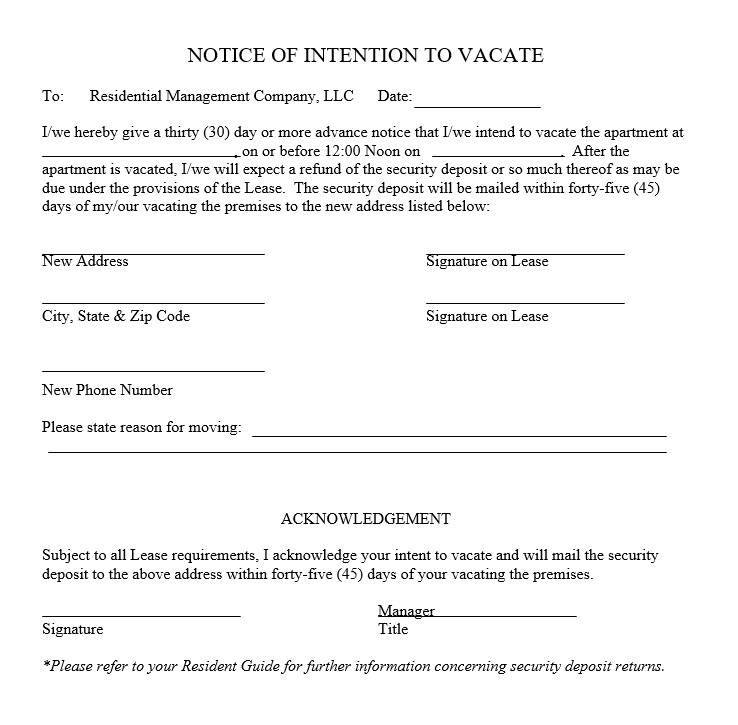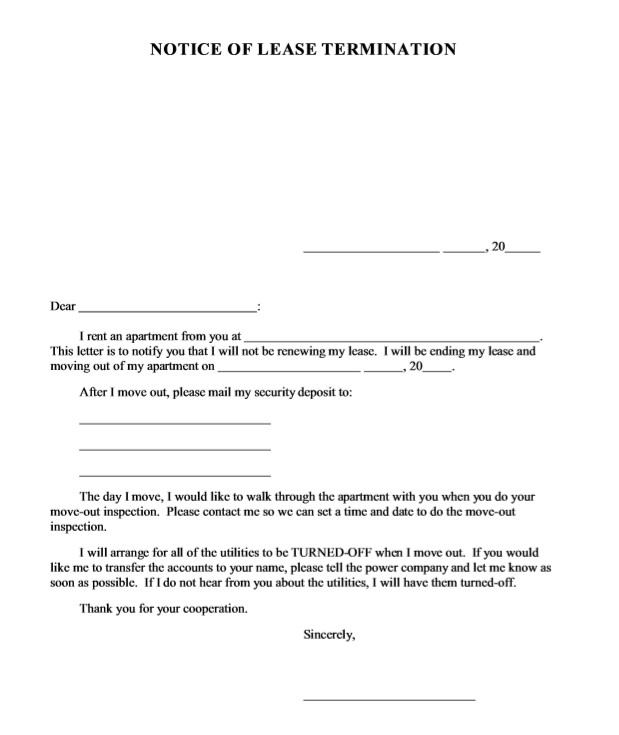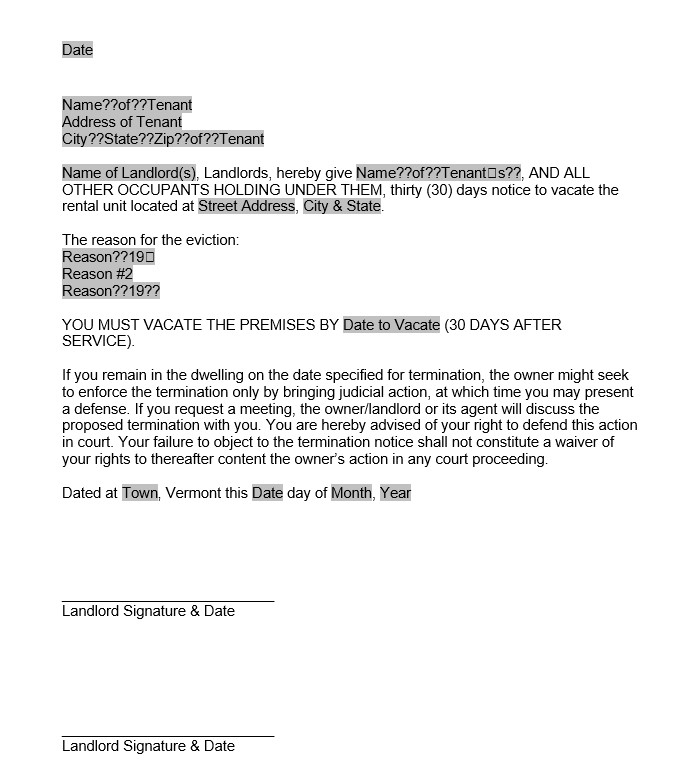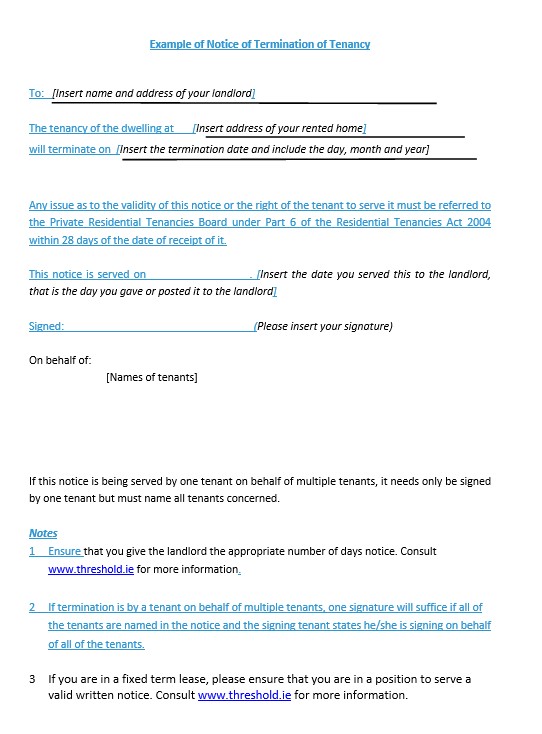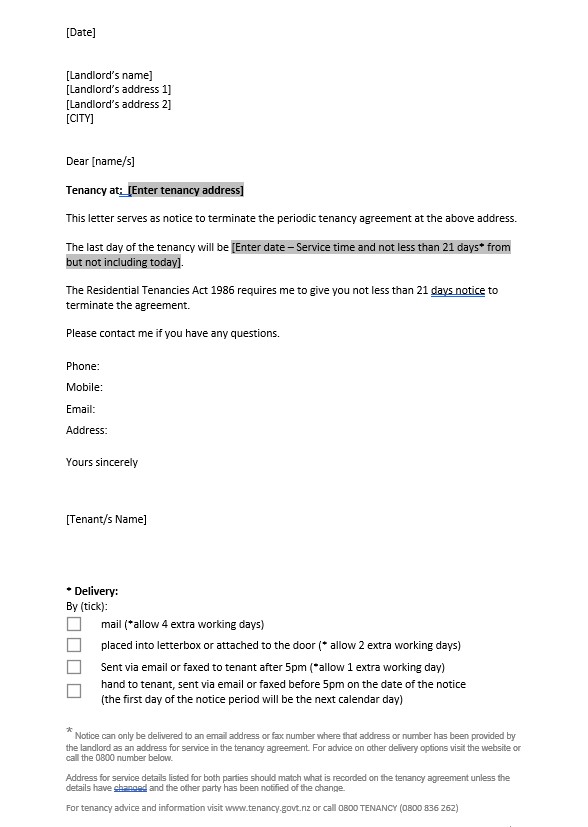Eviction notice templates indeed sound scary, but it is not the eviction itself. When a tenant gets an eviction notice, they still have options and rights with them. An eviction notice is able to be presented as a legal document, however, it still has to fulfill some strict requirements before a court considers it valid. For you who want to know more about this notice, below are the information that you should know about an eviction notice.
The Purpose of An Eviction Notice
An eviction notice is purposed to inform a tenant that a legal eviction process is about to start if the complaints of the landlord cannot be resolved. If the eviction is not based on certain complaints, generally, there is a longer deadline to respond which is 30 day eviction notice to 60 days eviction notice. If this issue is faced and the legal requirements are obeyed competently and quickly, the tenant is probably able to delay the process of eviction for weeks or months. Even, they might be able to prevent the eviction process to happen at all.
Components of an Eviction Notice
An eviction notice, a formal legal document, must comprise certain key components to affirm its legality and effectuality. The following are the critical elements that constitute a proper eviction notice:
- Heading: This involves the document’s title, which is typically designated as “Eviction Notice,” “Notice to Quit,” or “Notice of Lease Termination.”
- Date: Incorporating the date when the eviction notice was created and served to the tenant is crucial. It aids in establishing a timeline for the proceedings and calculating the notice period.
- Landlord’s Information: The landlord or the property management firm’s full name and contact details (address, email, contact number) should be conspicuously stated.
- Tenant’s Information: It is important to list the complete name of the tenant or tenants. All their names should be included if multiple occupants are in the unit, like a couple or flatmates.
- Property Address: The leased property’s exhaustive address, including any apartment or unit numbers, should be mentioned.
- Reason for Eviction: The eviction notice must transparently state the grounds for eviction. These could be non-payment of rent, infringement of lease terms, property damage, and illicit activities, among others, subject to the jurisdiction’s laws.
- Timeframe: The notice should indicate when the tenant has to rectify the issue or leave the property. Local and state laws and the reason for eviction determine this period.
- Remedial Measures: If relevant, the notice should mention the steps the tenant can take to fix the violation and prevent eviction. For instance, in cases of eviction due to rent arrears, the total outstanding amount and the mode of payment should be stated.
- Signature: The landlord or agent should sign the eviction notice. In some regions, the signature of a witness may also be needed.
- Legal Disclaimers: Certain jurisdictions might necessitate specific legal wording or disclaimers to be incorporated in the eviction notice.
While these elements make the eviction notice comprehensive, precise, and legal, the prerequisites may differ based on local and state landlord-tenant laws. Therefore, seeking advice from a legal expert or using a dependable eviction notice template compliant with local legislation is recommended.
The Requirements of An Eviction Notice
In any jurisdiction, an eviction notice has to provide all of the information that the tenant may need to understand the reason why the landlord wants to do the eviction process. In order to be valid, all information is also needed to respond within required time frames. The legal process of eviction will start if only the tenant does not use that information or does not appropriately respond before the deadline. The court will determine what kind of information is needed and how it has to be presented.
Some landlords often hire a legal counselor who can help and guide them in the process of eviction. Even though it is not necessary and there is no requirement for the tenant to hire a lawyer, there are many lawyers who offer a low-cost legal assistance service and legal aid clinic. So that for you who are facing this issue, it is worth to consider it.
An Eviction Notice Templates Must Contain Accurate Information
If you happen to receive an eviction notice, the first and the most important thing you have to do is carefully reading the whole eviction notice. Even though the notice is not really long, it contains a long list of strict legal requirements so that you have to understand them. An eviction notice is similar to any other kinds of notices. If the eviction notice or the delivery method is not valid or defective in anyways, the notice has to be filed again by the landlords. At least, this will give the tenant a week or two weeks more to find a solution.
The complaints of the landlords have to be stated on the eviction notice templates, along with the instruction about how to fix the issue within the time limit or deadline. The complaints often include accusations that the tenant breaks some terms or rules of their lease, such as disturbing neighbors or failing to pay the rent. It is essential to refer to personal records and compare them to the claims of the landlords.
How to Use Eviction Notice Templates
Using eviction notice letter templates can simplify creating a legally compliant notice to evict a tenant. Here are the steps on how to use these templates effectively:
- Choose a Template: Select an eviction notice template that corresponds to your needs and complies with local and state laws. You can find these templates from various online sources, both free and paid, such as legal websites, document template platforms, or real estate resources.
- Download the Template: Once you’ve chosen a suitable template, download it. Most templates are available in easily editable formats such as Word or PDF.
- Fill in the Required Information: Open the downloaded template on your computer and begin filling it out. Include all relevant details such as your name and contact information, tenant’s name and contact information, property address, date, reason for eviction, remedy (if applicable), and the eviction period.
- Review the Details: Double-check the eviction notice to ensure all the information provided is accurate. Any errors can lead to legal issues or delays in the eviction process.
- Sign the Notice: Once you’re satisfied with the content of the eviction notice, sign it. Sometimes, you might also need a witness to sign the document or have it notarized.
- Serve the Notice: The next step is to deliver the eviction notice to your tenant. Depending on local laws, this can be done in person, by registered mail, or through a professional process server.
- Keep a Copy: Keep a copy of the signed eviction notice for your records. It will be crucial evidence if you need to pursue an eviction lawsuit.
- Follow-Up: After serving the eviction notice, follow up on the next steps. These may include waiting for the tenant to remedy the violation, moving out, or proceeding with a formal eviction process if the tenant fails to comply.
Eviction laws can vary greatly, so it’s essential to ensure the template you use and the process you follow adheres to your jurisdiction’s laws. It’s always wise to consult with a legal professional if in doubt.
Eviction Notice Templates
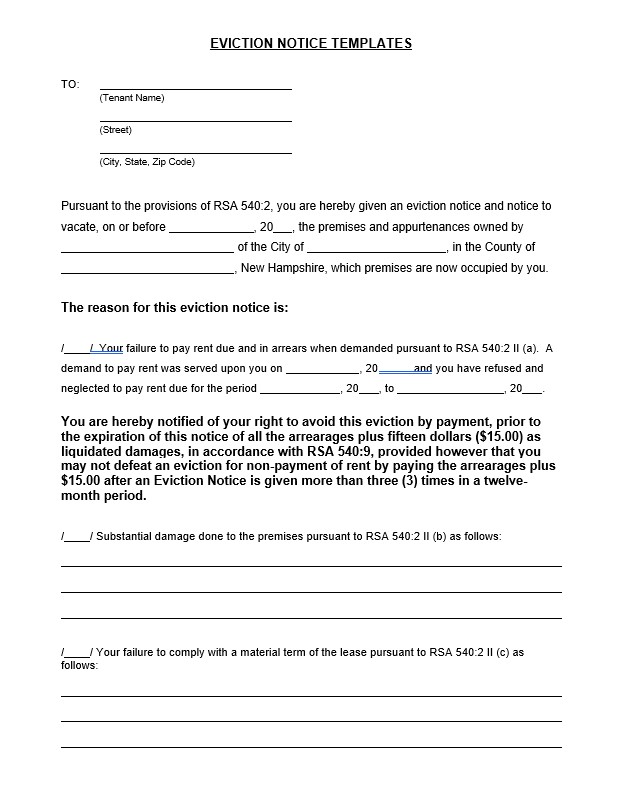
Baby Eviction Notice Templates
Blank Eviction Notice Templates
Eviction Notice Example
Tenant Eviction Notice Letter
Free Printable Eviction Notice Templates
Generic Eviction Notice Form Templates
lease termination agreement
move out notice to landlord
non payment of rent eviction notice
Notice of intention to vacate
Notice of lease termination
Notice to vacate template
Sample of notice of termination of tenancy
Terminate Tenancy Agreement Template
Writing a Proper Eviction Notice: Tips and Guidelines
Here are several vital suggestions and directives to heed while creating an eviction notice:
- Understand Local Regulations: The legislation regarding evictions varies across regions. It is important to be well-versed with the local and state laws on eviction processes, timelines, and legitimate reasons for eviction. In some jurisdictions, tenants have the right to rectify certain situations before the eviction can commence.
- Employ Understandable Language: The eviction notice should be simple to comprehend. Avoid using intricate legal terminologies. Clearly define the grounds for eviction, the time granted to the tenant to rectify the problem (if applicable), and the consequences of non-compliance.
- Incorporate All Pertinent Details: The eviction notice should list your contact details, the tenant’s name and address, the date, the cause for eviction, and the timeline to fix the issue or evacuate the property.
- Detail the Remedial Action: If the eviction can be prevented by the tenant undertaking a specific action, such as paying the overdue rent, this must be clearly outlined in the notice.
- Maintain Formality: Preserve a professional and respectful tone throughout the letter. Remember that this is a legal document, not a personal correspondence.
- Revise and Edit: Review the eviction notice for inaccuracies or omitted details. Mistakes can lead to delays or potential legal complications.
- Delivery Method of the Notice: Consider the mode of eviction notice delivery. Some states mandate specific delivery methods, such as in person, via certified mail, or through a process server. Maintain a record of this delivery.
- Get Legal Advice: It might be beneficial to consult a legal expert if you require clarification on any aspect of the eviction process. They can guide you and ensure adherence to the correct legal procedures.
With these guidelines, you can create an eviction notice that effectively conveys the requisite information and aids in preserving your legal tenant rights
as a landlord.
Customizing Your Eviction Notice Templates:
Eviction notice templates are extremely handy for drafting a legally sound notice. However, these templates should be customized according to your needs and local law requirements. Here’s how to go about it:
- Fill in Basic Information: Start by filling in the necessary basic information, such as the landlord’s name and contact information, the tenant’s name and address, and the date the notice is being given.
- Specify the Reason for Eviction: Clearly state the reason for the eviction. It could be non-payment of rent, violation of lease terms, or other relevant issues. Be as specific as possible, detailing the nature of the violation and citing the corresponding clause from the lease agreement, if applicable.
- Indicate the Notice Period: Specify when the tenant has to rectify the issue or vacate the premises. This period should align with local laws, which may stipulate different notice periods depending on the cause of eviction.
- Reference Local Laws: Include any specific language or clauses required by local or state law. It might include information on how the tenant can rectify the issue, the landlord’s rights and obligations, or details on eviction procedures in your jurisdiction.
- Use Clear, Concise Language: Keep the language of your eviction notice clear and professional. Avoid legal jargon that could confuse the tenant, and ensure the implications of the notice are readily understandable.
- Signature: Once all the necessary details have been added, the landlord or property manager should sign the notice. Some jurisdictions may require this to be done in the presence of a notary.
An eviction notice is a legal document and should be treated as such. Even small errors can cause delays in the eviction process or invalidate the notice. Therefore, seeking legal advice when customizing and finalizing your eviction notice template is recommended.
Common Mistakes to Avoid
Common Mistakes to Avoid When Drafting an Eviction Notice:
- Ignoring Local Laws: Landlord-tenant laws vary by state, county, and city. Failure to consider local laws when crafting an eviction notice can lead to invalid notices and legal repercussions. Always ensure your notice aligns with local regulations.
- Omitting Necessary Information: Your eviction notice should include all relevant details, like the tenant’s full name, the property address, the reason for eviction, and the duration of the notice period. Skipping any of these can result in an invalid notice.
- Using Inaccurate Information: Double-check all the information in your eviction notice. Using inaccurate or outdated information can invalidate your eviction notice and delay the eviction process.
- Lack of Clarity: An eviction notice must be clear and concise, stating the reason for eviction and the timeline for the tenant to either rectify the issue or vacate the premises. Avoid complex legal jargon that may confuse the tenant.
- Not Delivering the Notice Correctly: Proper eviction notice delivery is crucial. Check your local laws to determine acceptable methods of delivery. You may be required to personally deliver the notice, send it via certified mail, or use a process server.
- Being Unprofessional or Disrespectful: Despite the circumstances, you must remain professional and respectful in your communication. Insulting or threatening language can create unnecessary complications and potential legal issues.
- Forgetting to Document Everything: Keep a copy of the eviction notice and document its delivery. It could be important if you end up in court.
By avoiding these common mistakes, you can ensure your eviction process runs as smoothly and swiftly as possible. If you have any doubts or concerns, consider consulting a legal professional.
The Procedure of An Eviction Notice
After receiving the eviction notice, a tenant has to respond it on time. For example, a 30 days eviction notice, just like the name, requires the tenant to respond it within 30 days after they have received the notice. States, local jurisdiction laws, and certain circumstances are able to affect how long a tenant must respond the eviction notice. It will show at the beginning of the eviction notice templates the exact time frames and deadlines. The notice is not able to be upheld in a court if it does not clearly inform the tenant about the deadlines or time frames.
The Types of An Eviction Notice
- Notice to Pay Rent or Quit
If a tenant does not pay rent when it is due, the landlord has a right to give notice, giving the tenant options to pay the rent and associated late fee if there is any, or move out. The time period given to the tenant is usually from 3 days to 5 days. If the tenant pays the full amount within the time period, there will be no eviction in the notice. The landlord must start again with a new notice as well as a new time period given if there is another violation performed by the tenant which has to be resolved.
- Notice to Fix A Lease Violation or Quit
In some countries, a landlord is able to give a notice to a tenant to fix several violations of their rental agreement. Such as keeping a pet that is not allowed or more persons living in a unit than it is allowed in the lease agreement signed by both the landlord and tenant. The notice has to mention the amount of time given to the tenant to fix the violation. For instance, the state law might give the tenant 5 days to 10 days. As long as the tenant fixes the violation within the given period time, there is no eviction happens on the notice.
- Notice to Quit or Move Out
In some countries, a landlord is given a right to serve a notice to a tenant to move out from the unit without any possibilities of fixing a violation or something. In most cases, this kind of sample eviction notice templates is able to be given if the tenant has seriously violated the rental agreement. For example, the tenant is repeatedly late in paying rent, causing damages to the property, or disturbing other tenants. If the tenant is proven to have done what they are accused of, the tenant has to move out or be evicted.
For you who do not know yet the appearance of an eviction notice, you can look for it on the internet. There are many free blank eviction notice pdf and eviction notice template free if you need to use it. Those are the useful information that you must know about eviction notice templates.

The content creator team at calipsotree.com is dedicated to making topics accessible to everyone, with over 9 years of experience in writing and breaking down complex concepts into easy-to-understand articles that answer readers’ financial questions.






